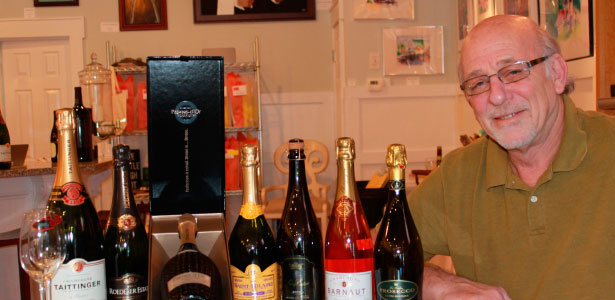Holiday Spirits

A guide to champagne and sparkling wines for the season
BY: Paul Wasserman, Uncorked by the Sea, Southport, NC
Legend has it that Dom Perignon after tasting his perfected wine, now known as Champagne, said “I’m drinking the stars”
As the Holiday Season and its festivities rapidly approach, what wines are more festive than Champagne and Sparkling wines? These bubbly libations are produced in nearly every wine producing region in the world. But none are more famous than the wines of the Champagne Appellation. It is the northern most vineyard area in France. It is so cool that the base wines would be barely palatable. It is the Champagne Method that turns these base wines into what some see as the ultimate elixir!
These wines were produced first in the early 1700’s. But this was not the first region to create a sparkling wine. That distinction goes to Blanquette de Limoux, an appellation in the Languedoc in southwest France. In fact, this sparkling wine began production 100 years before the first Champagne was produced. It should be noted that Blanquette is made in the Champagne Method.
Champagne is one of the world’s most complicated wines to make. To say these are wines that undergo a second fermentation in the bottle would be correct, but at the same time an understatement.
The Champagne Method begins with a series of blends. First, the winemaker blends 30-60 still wines known as “base” wines. These base wines are blends as well. They ae blends of three approved varietals: Chardonnay, Pinot Noir and Pinot Munier. The final blend is to create a non-vintage “House Style” and is completed by blending wines from several different years. The “House Style is always demonstrated by the producer’s Non-Vintage Brut.
After these blends are completed yeast and sugar are added to the bottles. The byproduct of the yeast and sugar is carbon dioxide—the secondary fermentation. While this process is taking place the bottles are stored neck down. Over time the spent yeast collects in the neck. When ready the necks are frozen and dead yeast cells pop out. To replace the lost wine a mixture of reserve wine and sugar are added. The amount of sugar in this solution determines the dryness of the Champagne: Brut (Very Dry), Extra Dry (Off Dry), Sec (Lightly Sweet), Demi-Sec (Sweet) and Doux (Very Sweet).
The “Champagne Method” is used throughout the world, but, outside Champagne itself, it is by law called “traditional Method”. The best American Sparkling Wines, as well as the best from other growing regions all use the “Traditional Method”. The major French Champagne Houses use this method at their US projects: Taittinger at Domaine Carneros; Moet & Chandon at Domaine Chandon and Louis Roedered at Roederer Estate, to name a few.
Most consumers of sparklers think first of Champagne then American Sparkling wines. But, there are some superb sparkling wines made elsewhere. The Cavas of Spain’s Penedes regions are fresh and delightful and generally inexpensive. Mont Marcal would be one to look for. Huia of New Zealand Sauvigon fame makes a stunning no-vintage Brut. We can’t overlook
The sparkling wines of Italy: Prosecco and Moscato. Added to these are the world class sparklers from Bellavista Franciacorta in Northern Italy’s Lombardi region. A producer to seek out is Castaldi Contadi Franciacorta. This producer makes a fantastic Brut and Rose.
When choosing a sparkler for the holiday season, it may not be necessary to choose a Luxury bottle such as Armand de Brignac, Louis Roederer Crystal or Dom Perignon, but buy the best you can afford. You and the Holiday festivities will be rewarded!
Legend has it that Marilyn Monroe took a bath in 350 bottles of champagne. And it was said she drank and breathed Champagne as if it were oxygen.
I can’t recommend bathing in Champagne. But I can recommend getting in the Champagne spirit this Holiday Season and all the seasons that follow!











Leave a Reply